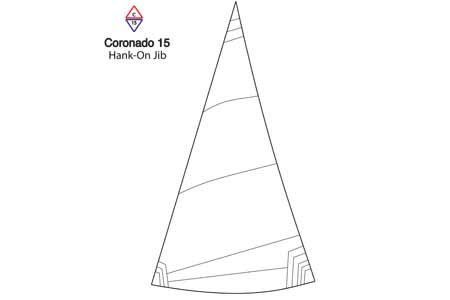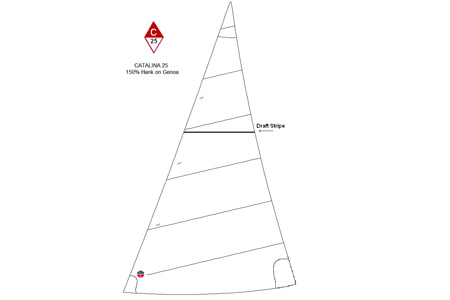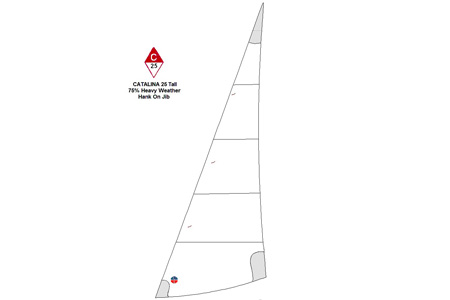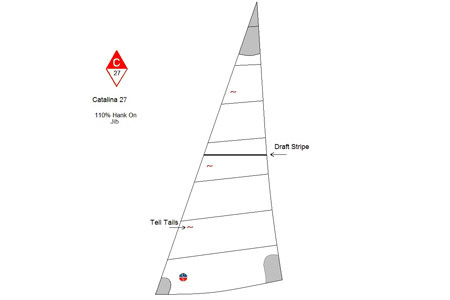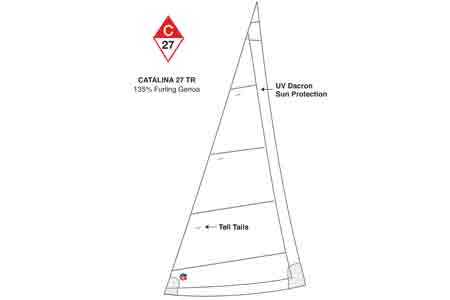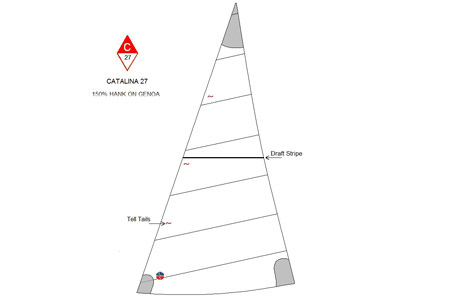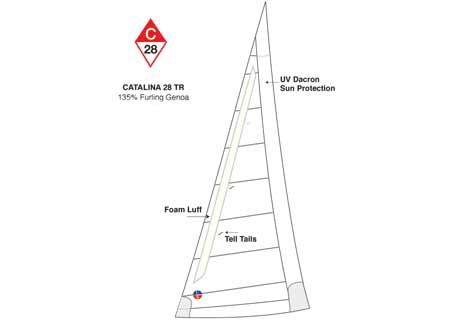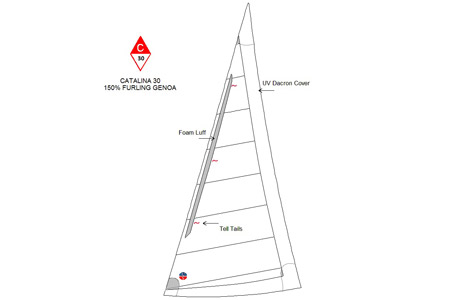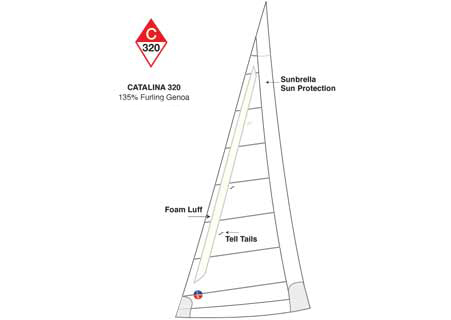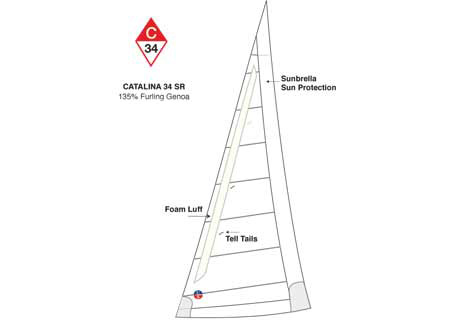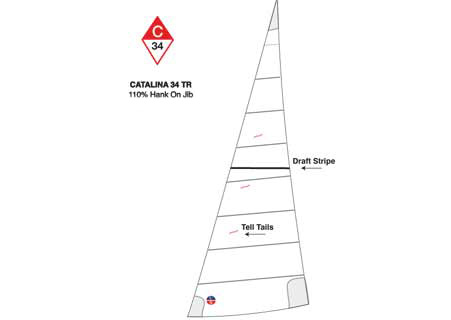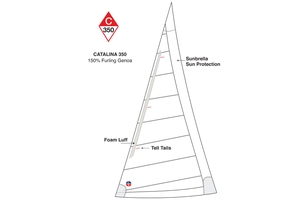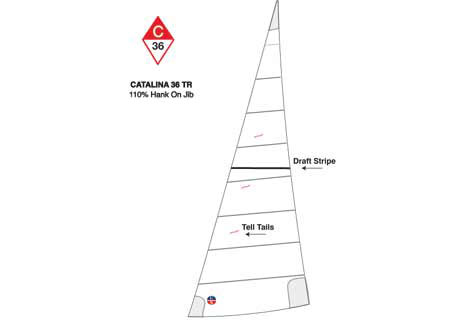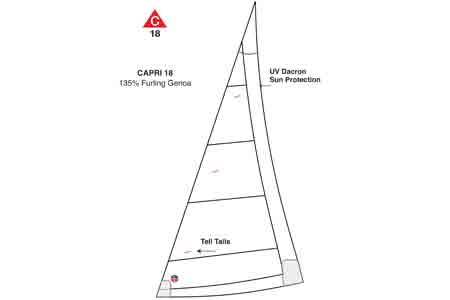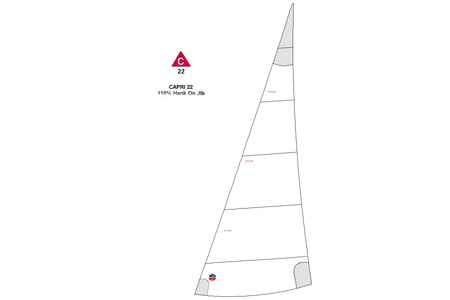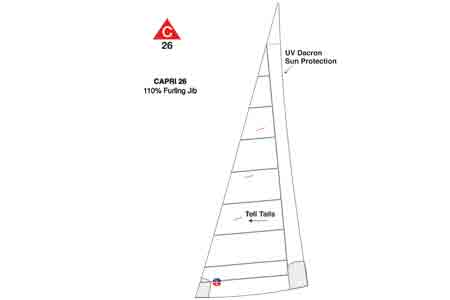What exactly does a sailor mean when he says "I have a 135% Genoa"? How is that number calculated and what does it mean? Most sailors understand that a larger percentage corresponds to a larger heads'l, but many don't know how that number gets calculated.
What size heads'l do I already have?
When ordering a new heads'l, it's a good idea to know what size you currently have so you can either order the same size, or adjust the size up or down to reflect the experience you have with your current sails and prevailing weather conditions in your area.
Headsail size is calculated from two measurements, one on your boat and one on the sail.
• The first is the "J" dimension. This is the distance from the mast to the bottom of the forestay at the stem fitting when measured along a line perpendicular to the mast. Since you can't measure through the cabin, measuring from the stem to the mast step is close enough.
• The second dimension is the "Luff Perpendicular" or "LP". This is the distance of the headsail clew from it's luff when measured along a line perpendicular to the luff. Rather than trying to establish a right angle at the luff, you can simply measure the shortest path between the clew and the luff.
• The size of your headsail expressed as a percentage is simply LP divided by the J.
For example, if you measured the "LP" at 11' and the "J" of your boat is 10', then: 11/10 = 1.1 or 110%.
On the same boat a sail with a 15' LP would be a 150%, (15/10 = 1.5 or 150%).

Use the dimensions shown in pink.
The "LP" is perpendicular to the luff of the sail. The "J" measurement extends to a point directly above where the forestay attaches to the stem fitting.
The "J" measurement can be measured as shown, or you can call our staff as we have that figure for most Catalinas.
Choosing your new headsails:
The 110% is a common size headsail suitable for a wide range of wind and sea conditions. It provides adequate power in a moderate breeze and takes a good bit of wind without being overpowered. Adding inboard sheeting for a 110% jib will almost certainly improve windward performance.
A 135% genoa may be more popular with sailors who sail primarily in moderate conditions. When combined with a roller furling system, the 135% genoa can be effectively reefed to something around a 110% jib when the wind pipes up and it will still maintain excellent sail shape. If you must reef deeper than that, the 135% genoa will still be an effective heads'l, though the shape may not be optimal.
The 150% genoa is usually used for very light air where its large sail area and easily flown light cloth can keep you moving in a zephyr. The 150% genoa should not be reefed too deeply, as its light cloth weight (essential for light air performance) makes it vulnerable to being blown out in heavy air. If the wind pipes up strong, the 150% genoa should be rolled up completely to preserve its shape.
Storm sails and heavy weather sails are typically in the 50% to 75% range. These are very sturdy specialized headsails that usually have a short luff as well. A storm sail might have a 50% luff and a 50% LP/J configuration. They are made for both hank on rigs and furling rig versions that can be hoisted over a furled heads’l. It is more common to have a 75% heavy weather sail aboard but if your are heading to Tahiti, a smaller storm jib is definitely in order.
Happy sailing
- The Catalina Direct Crew





